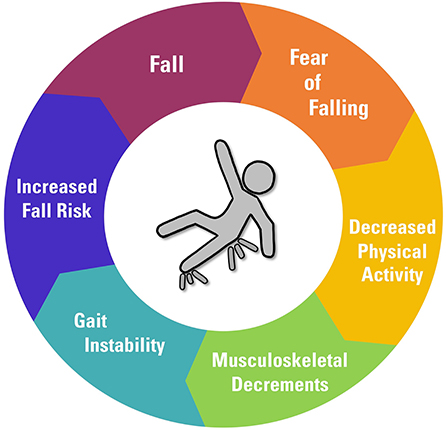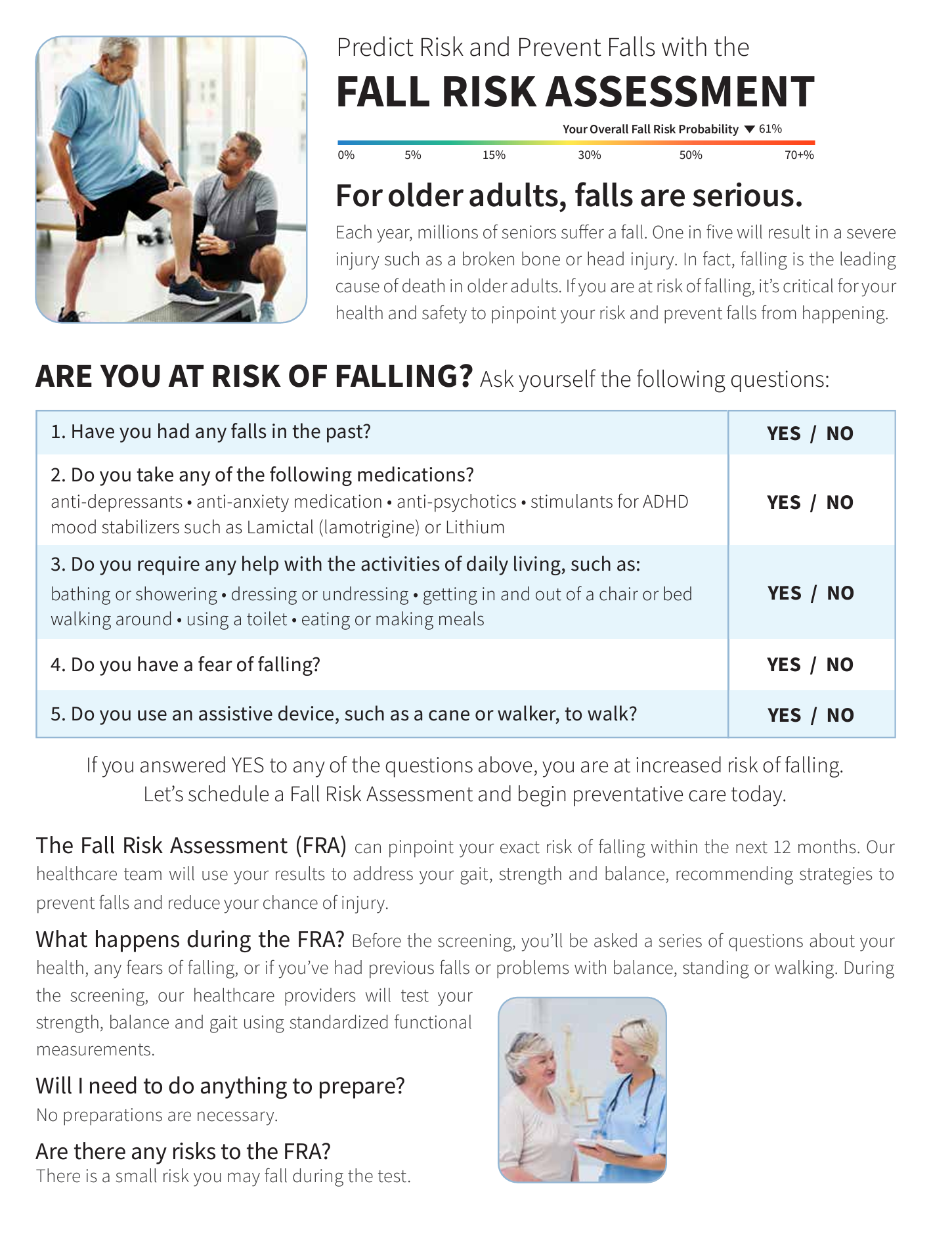Dementia Fall Risk for Beginners
Dementia Fall Risk for Beginners
Blog Article
Dementia Fall Risk Can Be Fun For Everyone
Table of Contents6 Simple Techniques For Dementia Fall RiskThe Ultimate Guide To Dementia Fall RiskIndicators on Dementia Fall Risk You Should KnowTop Guidelines Of Dementia Fall Risk
An autumn danger analysis checks to see how likely it is that you will certainly fall. It is mainly provided for older adults. The evaluation generally includes: This consists of a series of questions about your general health and if you've had previous falls or issues with balance, standing, and/or walking. These devices examine your strength, equilibrium, and stride (the means you walk).Interventions are recommendations that might decrease your risk of falling. STEADI includes three actions: you for your threat of dropping for your danger elements that can be boosted to attempt to prevent drops (for example, equilibrium issues, damaged vision) to decrease your danger of dropping by using efficient strategies (for instance, offering education and sources), you may be asked several inquiries including: Have you fallen in the past year? Are you stressed about dropping?
You'll rest down once more. Your company will certainly examine exactly how long it takes you to do this. If it takes you 12 seconds or more, it might suggest you go to higher risk for an autumn. This examination checks stamina and equilibrium. You'll being in a chair with your arms went across over your chest.
Relocate one foot halfway forward, so the instep is touching the big toe of your various other foot. Move one foot completely in front of the other, so the toes are touching the heel of your various other foot.
Dementia Fall Risk for Beginners
The majority of falls happen as an outcome of numerous adding elements; therefore, managing the danger of dropping starts with determining the variables that add to drop danger - Dementia Fall Risk. Some of the most relevant danger variables consist of: Background of prior fallsChronic medical conditionsAcute illnessImpaired stride and balance, reduced extremity weaknessCognitive impairmentChanges in visionCertain high-risk drugs and polypharmacyEnvironmental variables can additionally enhance the threat for drops, consisting of: Inadequate lightingUneven or damaged flooringWet or unsafe floorsMissing or harmed hand rails and get hold of barsDamaged or improperly equipped tools, such as beds, wheelchairs, or walkersImproper use assistive devicesInadequate guidance of individuals staying in the NF, including those who exhibit hostile behaviorsA effective autumn threat management program needs an extensive clinical assessment, with input from all members of the interdisciplinary group

The care plan ought to likewise include interventions that are system-based, such as those that promote a secure setting (ideal illumination, handrails, grab bars, and so on). The effectiveness of the interventions ought to be examined periodically, and the treatment strategy changed as necessary to mirror modifications in the fall danger assessment. Applying a loss threat monitoring system making use of evidence-based best technique can lower the frequency of falls in the NF, while restricting the potential for fall-related injuries.
Some Ideas on Dementia Fall Risk You Should Know
The AGS/BGS guideline recommends evaluating all adults matured 65 years and older for autumn risk each year. This screening consists of asking individuals whether they have actually fallen 2 or even more times in the previous year or looked for clinical interest for an autumn, or, if they have not fallen, whether they feel unstable when strolling.
People that have actually fallen once without injury must have their equilibrium and stride examined; those with stride or balance problems should obtain added analysis. A background of 1 autumn without injury and without stride or balance issues does not call for additional assessment past continued annual autumn risk testing. visit this site Dementia Fall Risk. A fall danger assessment is required as component of the Welcome to Medicare assessment

Some Known Factual Statements About Dementia Fall Risk
Documenting a drops background is one of the high quality indications for autumn avoidance and monitoring. A crucial component of risk analysis is a medication testimonial. Several classes of medications increase fall danger (Table 2). copyright medicines in certain are independent forecasters of drops. These medications often tend to be sedating, alter the sensorium, and impair equilibrium and stride.
Postural hypotension can typically be alleviated by reducing the dosage of blood pressurelowering medicines and/or stopping medications that have orthostatic hypotension as a negative effects. Usage of above-the-knee support hose pipe and copulating the head of the bed boosted may likewise decrease postural decreases in high blood pressure. The recommended elements of a fall-focused health examination are received Box 1.

A Yank time better than or equal to 12 seconds suggests high autumn risk. Being unable to stand up from a chair of knee elevation without making use of one's arms indicates enhanced autumn danger.
Report this page